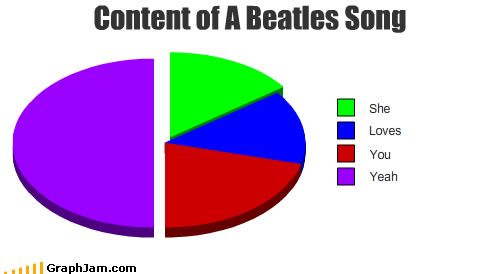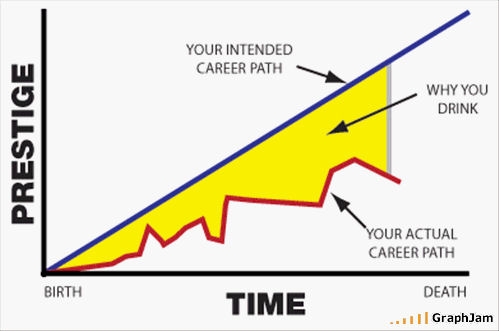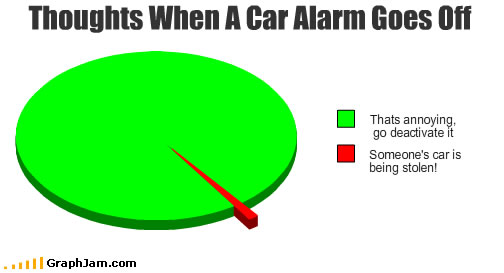Gold Bulls & Silver Fools Lose $29 Billion in September
/by Peter BrandtThree very sexy price charts
/by Peter BrandtWhat does a chart pattern really mean…
/by Peter Brandt…and how and why I changed my mind on Sugar.
Blogging during the past several months has driven home one huge lesson – many, many, many self-professed “chartists” do not have the first clue about the purpose of charting and charts.
Some of these same people frequently tweet about charts. Yet, they appear to be clueless. Frankly, I think it is an ego thing. They self-deceive themselves into thinking they get to create their own theories of charting and they have no interest in seeking out the wisdom of the early pioneers of classical charting principles (Schabacker, Edwards, Magee, others).
So, they make stuff up as they go, using their own opinions as the litmus test for truth. These folks will always be around – but over time the exact names will change, because each group of these ego-driven “traders” will leave the arena with their pockets turned inside out. I will make one more comment on this subject later in this posting.
So, exactly what purpose do charts actually serve
Charts are a record of where prices have been. At any given time a chart reflects the opinions of all market participants who have acted upon their opinions by buying or selling commodity contracts, foreign exchange pairs, stocks, ETFs, debt instruments, etc. Charts are maps of where markets have been. Over time a bar chart reflecting this buying and sell may form a recognizable geometric configuration. These geometric patterns can be useful for trading … to a point.
A chart is NOT predictive. Some people believe that if they could only study a chart hard enough, and in the right way, they would be able to determine what a market will do. NOT! I do not want you to miss this next point: Charts do not provide a prediction, they provide a possibility! Sorry, but that is the function of a chart.
A chart provides a trader with an edge. Exploiting an edge is how a trader makes money. I am attracted to classical charting for two reasons. Chart patterns:
- Provide me with clue for what is possible
- Offer – at least some times – an opportunity to construct an enormously asymmetrical reward to risk trading event
Technical analysis, including chart analysis, has earned voodoo reputation. It deserves this reputation. The reason is that technical analysts go on record with market predictions based on their analysis. Most of these market predictions are wrong. Of course, sometimes the predictions are wrong because patterns fail. Sometimes they are wrong because the chart misreads his or her chart. Now fundamental analysts are wrong just as often, but their methods do not earn voodoo status – this is a subject for another day.
There are five primary things you need to understand about charting.
- Most chart formations fail and morph into other patterns, which in turn fail and morph again.
- Charting cannot be used to understand a given market all the time.
- Major moves can occur without any clue from the charts.
- Charts are not predictive. They are a map of where markets have been, not a map of where they are going.
- Charts are a trading tool – and when used as a trading tool charts serve a wonderful purpose.
There are times when a chart morphs, morphs, morphs and keeps on morphing until a huge, no-question-about it pattern emerges. Then I get excited. It is at this point when the outcome of a market becomes a real possibility (not predictive). And it is at then point when I develop a “Strong Opinion, Weakly Held” (see post on this concept here).
When a chart pattern provides a real possibility along with a set up consistent with an overwhelmingly favorable reward to risk profile, then I become really interested.
With this discussion in place, let me transition to the current chart of Sugar.
Sugar — Yes, I changed my mind
I have had a strong opinion (weakly held) on the Sugar market. This opinion is based on the longest-term charts (not shown) which indicate the possibility for Sugar to trade at 70 cents. Thus, I have been interpreting the daily charts through the lens of this bias.
I believe that a bias can be very good thing for a discretionary trader because if the bias enables an unusually aggressive trading posture at the right time, huge profits can be made. If someone is against the concept of having a bias, then they should develop a systematic approach and dump the discretionary method.
Consistent with my predisposition, I saw the possibility that the daily chart was forming a continuation H&S pattern (or a cup and handle for you snooty tea drinkers). This pattern was forming in such a way that the right shoulder had balance with the left shoulder and also support from a 4-month trendline.
As a trader, the charts showed the possibility and offered an insane asymmetrical reward to risk profile. My strategy was simple.
- Buy a layer of longs near the possible right shoulder low, initially protecting the trade below the August 17 low.
- Add a layer if the market could get above 28.61.
- Add another layer if the market could complete the continuation H&S.
Thus, I had the possibility of establishing long three contracts for each $100,000 of capital. The maximum risk was 80 basis points (4/5th of one percent of capital, or $800 per $100,000). My potential gain per $100,000 if the continuation H&S was the slingshot to 60 cents would have been $104,160 – a possible reward to risk ratio of 130 to 1.
So what were the odds the possibility would become a reality? Maybe one in 20, one in 10, or one in five at the most! I would have been crazy had I not played the Sugar market the way I played it. I would be equally crazy if I continued to insist upon the bullish play when the chart started to tell me something else.
Let me interject one thing into this conversation. A chartist needs to have patience and discipline to be sure, but there is one other thing required to take advantage of the big moves. That is creative imagination. It takes imagination to talk about 60 to 70 cent Sugar when prices are below 30 cents. But, it took imagination back in 1982 to talk about Dow 1,800 when the Dow had never traded above 1,100 in its history. It took imagination in 2007 to talk about 60 cent Soybean Oil when prices were at 37 cents. It took imagination to think Copper would trade at $3.00 when it crossed $1.60 for the first time in history in 2005.
Please connect with what I am saying here – using imagination to think about the possibility of a chart is NOT the same thing as making a prediction or forecast. Charts are NOT predictive.
When I introduce a new major chart development into this blog, I am introducing a new possibility, not a prediction. If you have a problem with the fact that charts are useful to present possibilities, not predictions or forecasts, then I will strongly suggest that you will walk away from your experience trading charts with less money than your currently have.
Back to Sugar – it all changed on Friday. Trading a chart possibility involves creating a scenario on how prices will play out. The scenario never plays out exactly how I imagine, but there have been times when it has been pretty close. Importantly, market action can be such that the possibility is completely nullified.
The decline on Friday carried prices below the existing right shoulder low from September 12 at 27.21 and penetrated the 4-month trendline. The possible price scenario I had been operating under was negated.
Let me share a secret about charting (as if there really are any secrets). Eighty percent of the time when a chart sets up to offer a strong buy signal, inherent in the same chart will be a strong sell signal. In fact, if a chart pattern you are watching does not provide both, then you are well advised to question your interpretation.
The decline below 27.21 on Friday was a strong signal for me to short Sugar. I did do some shorting, but not nearly enough because it is sometimes difficult for me to switch my mind so quickly from one scenario to the opposite read. Yet, my experience is that if I am strongly biased in one direction, a chart signal in the opposite direction has a strong probability of working.
So, I am short Sugar. The market has a pretty good chance of testing the July low. If the market can close decisively under 25 cents, then we have a double top with a target of the May low at 21 cents.
Some concluding comments
You need to know that 90 percent of the content on the internet is garbage. You need to be prudent and wise consumers of internet trading content. Advice is cheap and way too plentiful. Guard your mind as you guard your trading capital. Choose well who you listen to. There are many wolves dressed as sheep in the trading industry. By the way, the StockTwits blogging community represents some of the best minds on the internet.
###
Do continuation head and shoulders patterns really exist?
/by Peter BrandtA number of readers have questioned the legitimacy of the continuation pattern. They claim that such a pattern does not exist.
Well, it is time to set the record straight!
Schabacker, Edwards and Magee are the authoritative sources on classical charting principles. The three men never claimed to be the final word on Gann or Elliott or moving averages or candlesticks. But, they are the final word on classical chart patterns.
Here is what Edwards and Magee had to say about the continuation H&S pattern (Technical Analysis of Stock Trends, 5th Edition, pages 181-182):
“Head-and-Shoulders Consolidations.
“All our references to the Head-and-Shoulders formations up to this point…have considered that pattern as typifying reversal of trend, and in its normal and common manifestation that is most definitely the Head-and-Shoulders function. But occasionally prices will go through a series of fluctuations which construct a sort of inverted Head-and-Shoulders picture which in turn leads to continuation of the previous trend.”
“There is no danger of confusing such continuation or consolidation formations with regular Head-and-Shoulders Reversals because, as we have said, they are inverted or abnormal with respect to the direction of price prior to their appearance. In other words, one of these patterns which develops in a rising market will take the form of a Head-and-Shoulders Bottom. Those that appear in declines, assume the appearance of a Head-and-Shoulders Top.”
Now, some folks opposed to the concept of the continuation H&S have parsed Edwards and Magee’s description — pointing out that the exact wording used included “sort of” and “will take the form of.”
I think that such parsing is equal to hair splitting. So did Richard W. Schabacker. In his manuscript, Technical Analysis and Stock Market Profits, written in 1937, Schabacker alluded to the fact that the continuation H&S serves a different purpose than the reversal H&S, but concluded with the following:
“This formation is not a true Head and Shoulders for a number of important reasons but we must admit that it is difficult to find a better name for it….we shall accept the suggested name and call it the Continuation Head and Shoulders.”
So, when I define a pattern as a continuation H&S formation, I am in some pretty good company. For those of you who still take exception to the labeling, take it up with Schabacker, Edwards and Magee.
By the way, the chart below displays one of the most classic continuation H&S patterns of all time.
I believe Schabacker, Edwards and Magee would have accepted this labeling, and that is good enough for me. Of course, I could start referring to the pattern as the “a reputed, appearing as, but conditionally qualified, sort of continuation H&S pretender.” Nah, I think I will just refer to it as a continuation H&S pattern, same as I have been doing all along.
###
An excellent example of the “all-one-market” phenomena
/by Peter BrandtIt has come to be known as the “risk-on/risk-off” or “all-one-market” phenomena in global markets. It is a situation where seemingly unrelated markets have taken on an historically high correlation. Individual markets seem to be the proxy for all other markets.
I have witnessed periods in the past when unusually strong correlations existed for months and months. But, I have never experienced the level of correlation we have lived with as traders since 2008. There are a lot of theories out there to explain this phenomena. Most of them touch on the global flow of capital, speculative herd instincts, liquidity, the search for “safe havens,” and the like. I will leave the precise and correct explanation to those much smarter than myself.
Any way, I have come across near identical chart patterns in three seemingly unrelated markets (although I am sure I will hear a scenario from many of you as to why these markets are not unrelated).
The charts shown below are Crude Oil, S&Ps and the EURUSD. Note that the first two are daily graphs, while EURUSD is an intra-day chart. Seeing the same pattern in different time frames has become known as the “fractal” concept. But, nevertheless, the price behavior of the three markets has been nearly identical during their respective corrective rallies.
Will the outcomes be the same? Will one of the three be the leading indicator? It will be interesting to see. I can say this — the pattern is either very bearish or quite bullish. Talk about hedging my bet? What we see at the present time qualifies as a possible bearish rising wedge of a possible horn or sloping bottom.
My guess is that all three patterns will morph into something different. Big help am I!
Markets: $CL_F, $OIL, $SPY, $ES_F, $EURUSD, $G6E_F
A challenge to the non-day traders among you.
/by Peter BrandtMama said there would be days like this
/by Peter BrandtWhen the flag ($SPY) stops flying
/by Peter BrandtThe flag interpretation in the U.S. stock indexes is beginning to unravel.
I have been loudly “waving the flag” for another leg down in the U.S. stock. Well, I am beginning to doubt this interpretation based on a well burried sentence in the Edwards and Magee book. I thank reader Andrew for our dialogue about this matter.
A discussion of flags in Technical Analysis of Stock Trends, Chapter 17 (Measuring Implicatons in Chart Patterns) points out that if the flag continues for more than three weeks, the flag interpretation is probably not correct.
We are now in the fifth week of the flag. The Dec. S&P futures punched through the bottom of the flag today and appears to have little follow through. A close above Friday’s close would put the flag interpretation 70% in doubt, in my opinion. Of course, this flag may prove to be an outlier and still work. But, it needs to work today or tomorrow at the latest.
Does a failure of the flag mean the stock market has bottomed? NO!!!! What it means is that the flag will morph into a larger pattern. The dominant trend in stocks is down. Periods of confusion normally are resolved in the direction of the dominant trend.
Markets: $SPY $ES_F
Recent Posts:
 Join The Exclusive Macro Trading Community With Factor’s Own Jonathon KingJuly 25, 2024 - 11:07 am
Join The Exclusive Macro Trading Community With Factor’s Own Jonathon KingJuly 25, 2024 - 11:07 am- The “We-Fund-You” Prop Trading Industry should be immediately shut downJuly 17, 2024 - 5:54 am
 The beautiful symmetry of past Bitcoin bull market cyclesJune 2, 2024 - 12:10 pm
The beautiful symmetry of past Bitcoin bull market cyclesJune 2, 2024 - 12:10 pm Bitcoin — a once in a lifetime trade, never to be equaledMay 3, 2024 - 3:10 pm
Bitcoin — a once in a lifetime trade, never to be equaledMay 3, 2024 - 3:10 pm




















